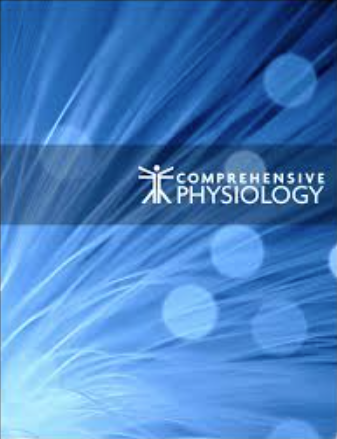求助PDF
{"title":"衰老与肺部疾病易感性","authors":"Julia Budde, Gwen Skloot","doi":"10.1002/cphy.c210026","DOIUrl":null,"url":null,"abstract":"<p><p>The lungs are continually subjected to noxious and inert substances, are immunologically active, and are in a constant state of damage and repair. This makes the pulmonary system particularly vulnerable to diseases of aging. Aging can be understood as random molecular damage that is unrepaired and accumulates over time, resulting in cellular defects and tissue dysfunction. The breakdown of cellular mechanisms, including stem cell exhaustion, genomic instability, telomere attrition, epigenetic alteration, loss of proteostasis, deregulated nutrient sensing, mitochondrial dysfunction, cellular senescence, altered intercellular communication, and changes in the extracellular matrix is thought to advance the aging process itself. Chronic obstructive pulmonary disease (COPD), idiopathic pulmonary fibrosis (IPF), and cancers illustrate a pathologic breakdown in these mechanisms beyond normal aging. The immune system becomes less effective with advancing age. There is a low-level state of chronic inflammation termed inflammaging which is thought to be driven by immunosenescence, the changes in the innate and adaptive immune systems with advancing age that lead to dysregulation and decreased effectiveness of the immune system. These processes of aging lead to expected changes in the form and function of the respiratory system, most notably a loss of lung elasticity, decrease in respiratory muscle strength, increase in ventilation-perfusion mismatching, and stiffening of the vasculature. The astute clinician is aware of these expected findings and does not often attribute dyspnea to aging alone. Maintaining a low threshold to investigate for comorbid disease and understanding how pulmonary disease presents differently in the elderly than in younger adults can improve clinical outcomes. © 2022 American Physiological Society. Compr Physiol 12:3509-3522, 2022.</p>","PeriodicalId":10573,"journal":{"name":"Comprehensive Physiology","volume":"12 3","pages":"3509-3522"},"PeriodicalIF":4.2000,"publicationDate":"2022-06-29","publicationTypes":"Journal Article","fieldsOfStudy":null,"isOpenAccess":false,"openAccessPdf":"","citationCount":"4","resultStr":"{\"title\":\"Aging and Susceptibility to Pulmonary Disease.\",\"authors\":\"Julia Budde, Gwen Skloot\",\"doi\":\"10.1002/cphy.c210026\",\"DOIUrl\":null,\"url\":null,\"abstract\":\"<p><p>The lungs are continually subjected to noxious and inert substances, are immunologically active, and are in a constant state of damage and repair. This makes the pulmonary system particularly vulnerable to diseases of aging. Aging can be understood as random molecular damage that is unrepaired and accumulates over time, resulting in cellular defects and tissue dysfunction. The breakdown of cellular mechanisms, including stem cell exhaustion, genomic instability, telomere attrition, epigenetic alteration, loss of proteostasis, deregulated nutrient sensing, mitochondrial dysfunction, cellular senescence, altered intercellular communication, and changes in the extracellular matrix is thought to advance the aging process itself. Chronic obstructive pulmonary disease (COPD), idiopathic pulmonary fibrosis (IPF), and cancers illustrate a pathologic breakdown in these mechanisms beyond normal aging. The immune system becomes less effective with advancing age. There is a low-level state of chronic inflammation termed inflammaging which is thought to be driven by immunosenescence, the changes in the innate and adaptive immune systems with advancing age that lead to dysregulation and decreased effectiveness of the immune system. These processes of aging lead to expected changes in the form and function of the respiratory system, most notably a loss of lung elasticity, decrease in respiratory muscle strength, increase in ventilation-perfusion mismatching, and stiffening of the vasculature. The astute clinician is aware of these expected findings and does not often attribute dyspnea to aging alone. Maintaining a low threshold to investigate for comorbid disease and understanding how pulmonary disease presents differently in the elderly than in younger adults can improve clinical outcomes. © 2022 American Physiological Society. Compr Physiol 12:3509-3522, 2022.</p>\",\"PeriodicalId\":10573,\"journal\":{\"name\":\"Comprehensive Physiology\",\"volume\":\"12 3\",\"pages\":\"3509-3522\"},\"PeriodicalIF\":4.2000,\"publicationDate\":\"2022-06-29\",\"publicationTypes\":\"Journal Article\",\"fieldsOfStudy\":null,\"isOpenAccess\":false,\"openAccessPdf\":\"\",\"citationCount\":\"4\",\"resultStr\":null,\"platform\":\"Semanticscholar\",\"paperid\":null,\"PeriodicalName\":\"Comprehensive Physiology\",\"FirstCategoryId\":\"3\",\"ListUrlMain\":\"https://doi.org/10.1002/cphy.c210026\",\"RegionNum\":2,\"RegionCategory\":\"医学\",\"ArticlePicture\":[],\"TitleCN\":null,\"AbstractTextCN\":null,\"PMCID\":null,\"EPubDate\":\"\",\"PubModel\":\"\",\"JCR\":\"Q1\",\"JCRName\":\"PHYSIOLOGY\",\"Score\":null,\"Total\":0}","platform":"Semanticscholar","paperid":null,"PeriodicalName":"Comprehensive Physiology","FirstCategoryId":"3","ListUrlMain":"https://doi.org/10.1002/cphy.c210026","RegionNum":2,"RegionCategory":"医学","ArticlePicture":[],"TitleCN":null,"AbstractTextCN":null,"PMCID":null,"EPubDate":"","PubModel":"","JCR":"Q1","JCRName":"PHYSIOLOGY","Score":null,"Total":0}
引用次数: 4
引用
批量引用


